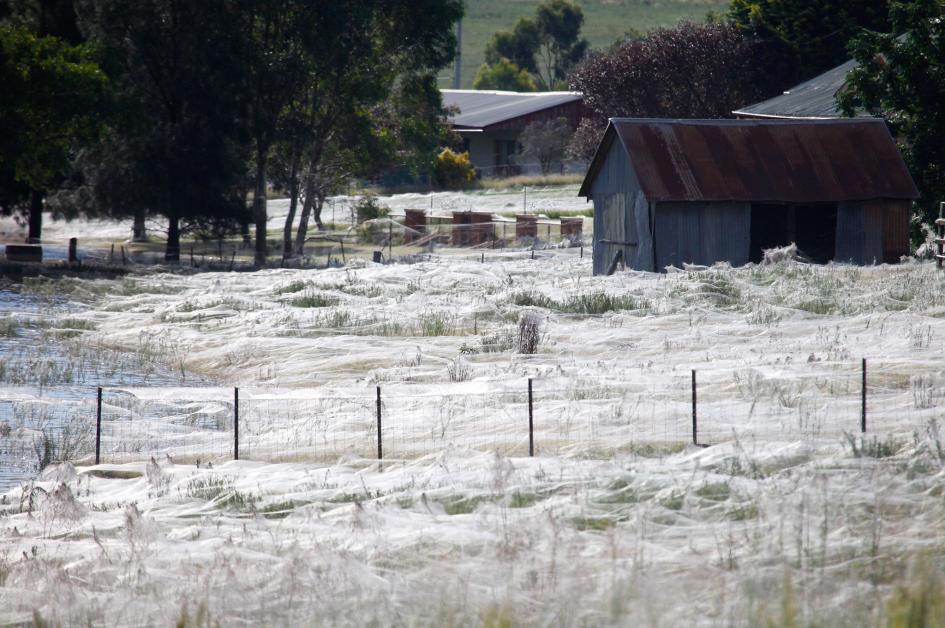
Millions of Spiders Rain Down on Australia—Why?
Source:news.nationalgeographic.com
In what’s called a mass ballooning, the tiny arachnids used silk strands to catch air currents on their way to a new home.
Forget cats and dogs—it was raining spiders recently in southern Australia, according to local news reports.
Millions of spiders dropped from the sky in the Southern Tablelands region (map), blanketing the countryside with their webs.
“They fly through the sky and then we see these falls of spiderwebs that look almost as if it’s snowing,”
local resident Keith Basterfield told the Goulburn Post.
Though many news reports have called them babies, the spiders are actually just “very, very small” adults called sheet-web weavers or money spiders, according to Robb Bennett, a research associate in entomology at the Royal British Columbia Museum in Victoria.
It’s unclear what spurs these spiders take to the skies in what are called mass ballooning events, Bennett notes.
Latest Weird & Wild Stories
A picture of a white stoat.
Before and After: See Animals Change Their Coats for Winter
Pictures: Rare White Giraffe and Other Unusually Pale Animals
Top 10 Weirdest Animal Stories of 2015—Editors’ Picks
But once they do, millions crawl to the highest points of their habitat—say a fence pole, or a tall plant—and send out silk strands that allow them to be lifted on air currents.
“It’s a reverse-parachute effect—they’re going from the ground into the air,”
Bennett said.
“It’s awe-inspiring.”
The vast majority of these “aerial plankton” will die during the journey, eaten by predators or killed by harsh weather conditions. But only a small fraction need to survive to set up shop in their new home.
Thanks to this impressive feat, spiders tend to be the first creatures to recolonize an area—say, an agricultural field—that has been completely destroyed.
Such ballooning events aren’t unique to Australia. They also occur in the Northern Hemisphere—ballooning spiders have been spotted in the United States and Britain, for instance—but are still “relatively rare and random,” Bennett says.
The spiders pose “no danger to people. It’s a spectacular natural history occurrence.”
Wonders of Silk
In 2012, record rains in the same Australian region spurred a mass ballooning event.
In that case, ballooning allowed the spiders “to move out of places where they’d surely be drowned,” Robert Matthews, a professor emeritus of entomology at the University of Georgia, said of that event.
Producing large quantities of silk creates a sort of “vast trampoline” that supports the spiders as they’re fleeing the water, he said.
Although acres of spiderwebs may gross out some arachnophobes, the impressive feat shows “the versatility of things [spiders] can do with silk,” Matthews noted.
Silk has been a
“huge evolutionary breakthrough,”
he said, and “this is one more example of why spiders have been a successful group.”
